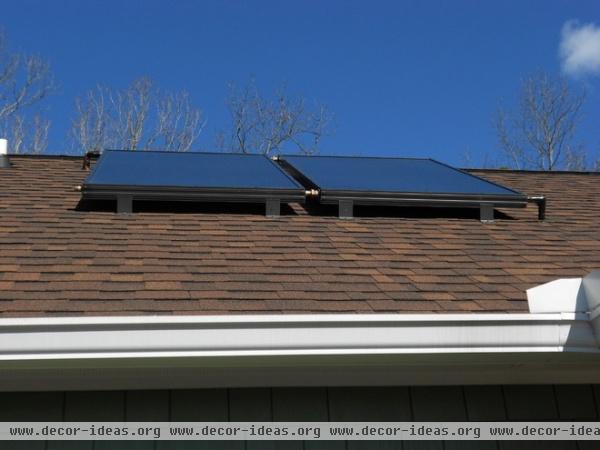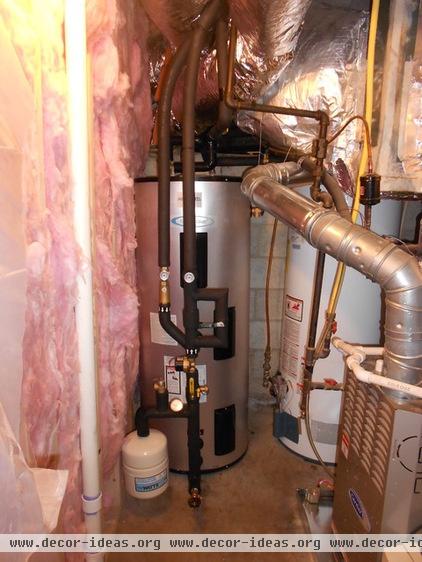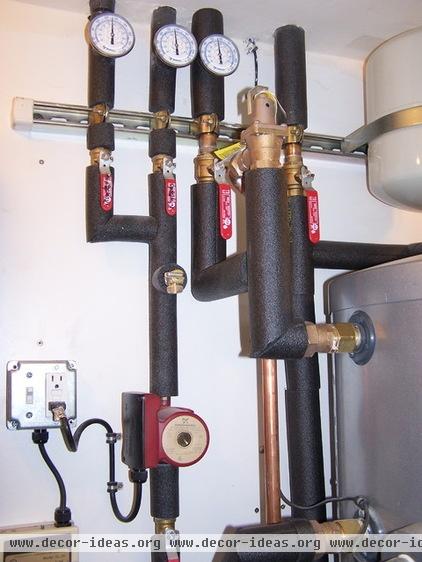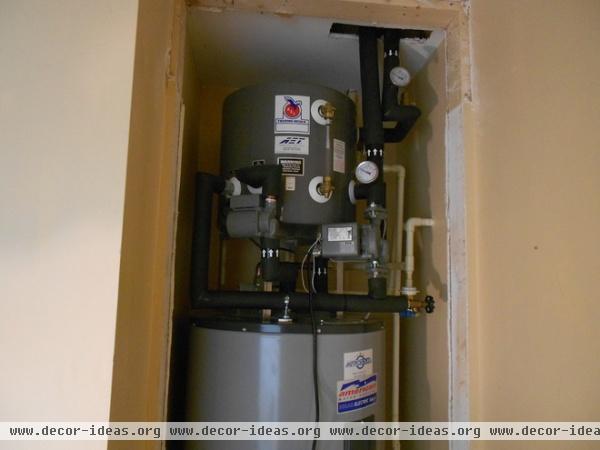How to Add a Solar Water Heater
http://decor-ideas.org 02/28/2014 23:23 Decor Ideas
As people increasingly build better houses, with more efficient envelopes and lower energy consumption and waste, a greater percentage of the energy we do use is going toward heating water. In fact, in a Passive House and many LEED-certified houses, heating water for residential use is the primary energy demand.
As a result, here in Europe, many local and national laws now require that a certain percentage of residential hot water be heated by renewable energy. A solar water heater is one way to meet that requirement without dipping too far into savings or renovating an entire system.
Let’s look at some of the basics to consider when adding your own solar water heater.

Solar Hot Water Project: Installing a solar thermal panel to provide hot water for residential use (either to be used right away or as part of a hydronic radiant heating system), through an indirect circulation system.
I am only going to talk about indirect circulation systems here for a few reasons. Indirect systems use a special fluid in the actual solar thermal panel. This fluid heats up and then passes through a heat exchanger, transferring the heat to the potable water you end up using. These systems are generally more efficient and resistant to freezing temperatures than direct systems. The fluid never mixes with your potable water, helps prevent corrosion in the pipes of the system and can carry more heat with it.
It’s a good project for you if: You’re looking for a system that does not involve intensive home remodeling. A solar water heater can be added to an existing system with relative ease, as long as the installer is experienced in this particular kind of system.

Who to hire: A specialty plumber or contractor with experience in solar water heaters. Be careful in choosing your installer. This is a system that if poorly installed can cause serious problems (including leaks in your roof). Ask for references and examples of work.
Cost range: While installation costs differ depending on the project, you should set aside $7,000 to $10,000. While that seems like a large chunk of money, you can usually expect to see big savings immediately. The U.S. Department of Energy estimates that monthly bills drop by 50 to 80 percent after a solar water heater is installed. An excellent page on its website can help you estimate initial costs and the payback of a solar water heating system. In the U.S. also check DSIRE, a database of state and national incentives that could help speed up payback.
Typical project length: As long as you don’t have to adjust the structure of the house or add space for the mechanical room (where the tanks and systems are stored), the installation of a solar hot water system and its components shouldn’t take much more than a week, and sometimes less.
Best time to do this project: Anytime your roof isn’t covered in snow. Start planning now for an installer to come out to your house when spring hits.

What to expect: This is what a typical mechanical room looks like. The large tank is the hot-water storage tank, with the pipes running down from the roof panel installation. Also notice the expansion vessel (the small white tank on the floor). The expansion vessel allows the fluid to expand without cracking the pipes.
There should also be a safety valve (not visible here) that discharges the fluid of the system in case the expansion vessel is not sufficient in an emergency.

Here you can see the hot-water storage tank on the right, with the expansion vessel on top of it. The red fixture in the middle is the circulation pump, which keeps the fluid moving.
Notice that all the pipes are insulated. The fluid inside the pipes can reach temperatures above 212 degrees Fahrenheit (100 degrees Celsius), so it is essential that the pipes are physically removed from the rest of the system and insulated sufficiently. If the structure of your house is wood or contains flammable insulation, such as wood fiber, you need to pay special attention to the protection and placement of the pipes to avoid a fire hazard.

Here is a system that shows an integration with a gas burner. Depending on the location, climate and season, the preheated water from the solar panel may not meet all of the home’s hot-water needs. This booster ensures hot water even when the panel has reached its limit.

First steps: Do your research and decide which solar water heater system will work best for your needs. Will you be attaching the system to a radiant heating system, for example?
If you need help getting your head around the situation, ask a green building professional or an experienced architect or contractor for a design consultation. A pro can help you determine which part of your roof is the best location for the solar thermal panel. (It will be oriented toward the equator for optimal solar radiation.)
You can also browse Energy Star–rated water heaters to start getting a better idea of costs before asking for quotes.
More: Let’s Clear Up the Confusion About Solar Panels
Related Articles Recommended












